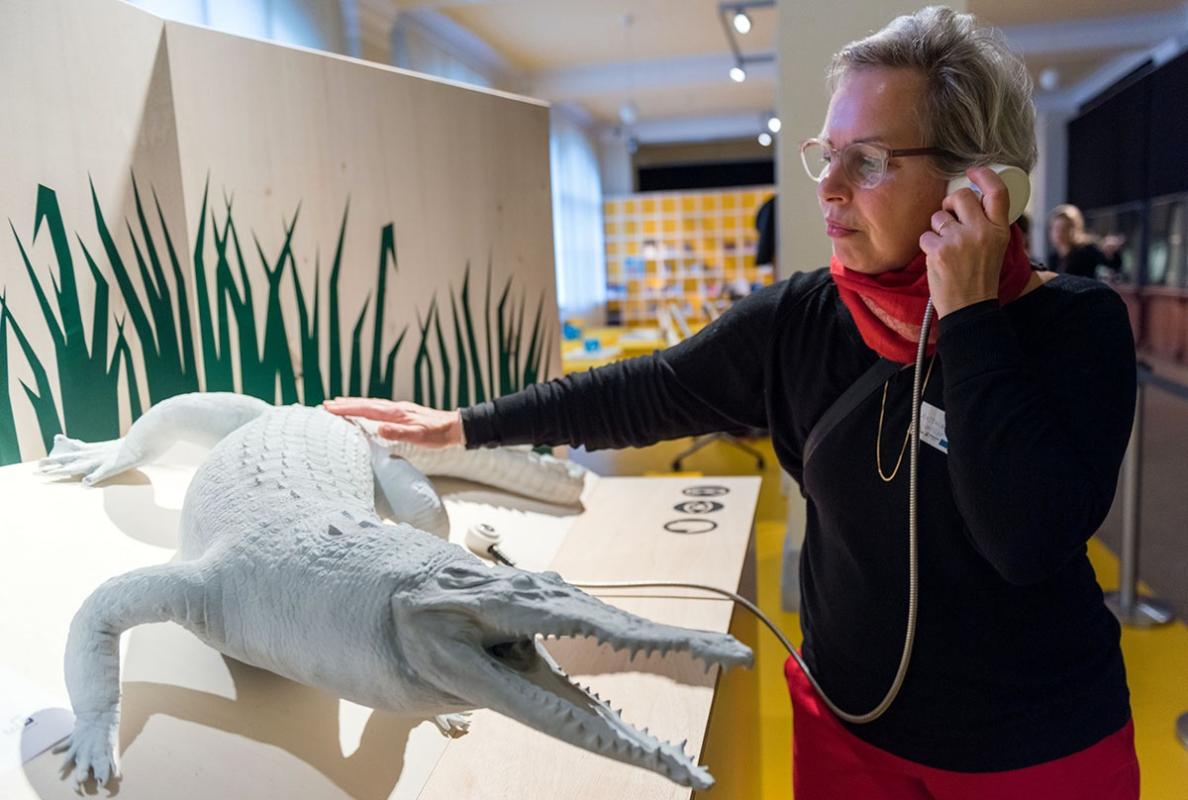As part of a project by the Mediasphere For Nature application lab, the original specimen of a saltwater crocodile was digitized from the collection of the Museum für Naturkunde. The data obtained was then used to create a full-size 3D model that cannot only be admired visually but can also be explored through our senses of hearing and touching. This model will now be presented to the expert audience at this year's FOCUS conference.
Museum professionals and experts from the cultural sector will meet from October 25 to 27 at the 700-year-old Paulikloster in Brandenburg an der Havel for the FOCUS conference to address future trends and current developments in current museum operations. In addition to numerous workshops and lectures, the conference will also present best practice examples from museums, service providers and developers.
One of this year’s exhibits is a very special model from the Museum für Naturkunde, created as part of a joint project by the application lab Mediasphere For Nature together with the model builders from werk5 GmbH. Driven by the desire to make the museum's digital media tangible for all by means of an inclusive test project, a specimen of a saltwater crocodile that is otherwise not accessible to the public was first digitized by 3D scan and then converted into a full-size 3D model using 3D printing techniques.
The goal was to develop a tactile model that would appeal to people with and without visual impairments alike. Thanks to built-in sensor technology, people also have the opportunity to learn more about the characteristics of the "Saltie" via headphones when they touch sensory points on the surface of the model. In addition to experts from the #goinclusive initiative, who specialize in the implementation of barrier-free projects, the education department of the Museum für Naturkunde was also consulted in the development process.
The implementation of the multi-sense crocodile model supports goals of the museum's Future Plan in several ways. First, the project allowed the museum to focus specifically on the issue of accessibility. werk5's topic-related experience helped through years of work with the #goinclusive initiative, which drives the conception, design, and production of inclusive projects. Secondly, the implementation of the tactile crocodile model demonstrates the diverse possibilities offered by the digitization of collection objects: over the course of the project, a tangible, analog collection object in the form of a juvenile saltwater crocodile specimen was transformed into its digital 3D twin. The digital 3D model was then turned into a haptic, accessible tactile model contextualized by audio feedback through the work of werk5 GmbH.
An exciting journey from analog to digital and back to analog again and a perfect example to demonstrate how collection digitization can create an inclusive visitor experience.
